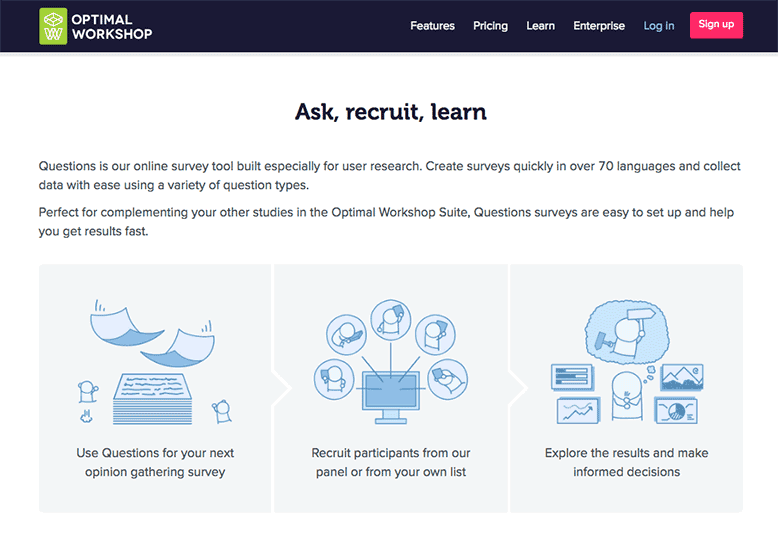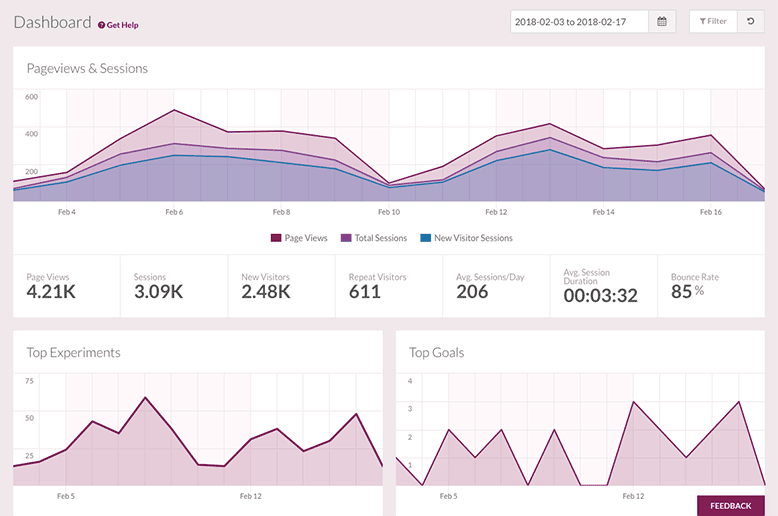Five User Research Methods for Better Digital Products

Conducting user research can help you create useful, well-loved web and mobile applications. Otherwise, you run the risk of designing products based on personal biases and hunches, which are often wrong. Here are five methods to help you build better digital products.
Websites or digital products that employ user research and user testing are based on what visitors actually want rather than on what we assume they want. If you don’t do research or track users and a product fails, you might have no idea why. Conducting user research and deploying those insights into the products you build will result in happier customers. More effectively addressing your customers’ needs also improves web sustainability by quickly delivering what people need, reducing the resources necessary to find answers or accomplish a task. Everybody wins.
Five User Research Methods
Here are five qualitative and quantitative research tactics we employ to quickly get valuable user insights which inform better decision-making on digital projects.
1. Conduct online surveys
User surveys offer great ways to collect quantitative data on user preferences. The Nielsen Norman Group advises that you get results from at least 20 subjects in any quantitative test for statistically significant numbers.
To conduct a user survey, create a short list of questions that focus on what you hope to discover. Be judicious and realistic in what you ask: surveys can collect plenty of data, but lengthy or too many questions might cause survey abandonment. Concentrate on questions that validate or refute any assumptions you might have.
Tools like SurveyMonkey, Typeform, or Google Forms offer the ability to quickly and efficiently track responses. Optimal Workshop offers a variety of UX research tools, including surveys and questionnaires as well as tree-testing, card sorting, and other handy time-savers.

Not sure what to ask? If you have an existing digital product to test, the System Usability Scale (SUS) on usability.gov provides a quick yet reliable way to evaluate product usability. Originally created in 1986, it has become an industry standard referenced in over a thousand publications. Its ten questions are broad enough to research usability for a wide variety of products and services and score them on a scale of 1 to 100. Each question offers five response options ranging from Strongly Agree to Strongly Disagree. You can download a SUS template here.
Sometimes it can be helpful to start with assumptions about what target users might need in order to jumpstart the question creation process. Running a user persona workshop or customer journey mapping exercise before conducting your survey might help.
Here are three common methods for finding survey participants:
- Existing Customers: If it’s an option, reach out to your existing customer base. They are the best resource to provide accurate information about their needs and how they interact with your organization.
- Social Media: If your own network represents people you’re trying to reach, put it to use and make requests via social channels. Online groups or forums dedicated to a specific topic related to your needs are great places to make these requests.
- Online Advertising: Online advertising platforms like Google AdWords, Facebook, LinkedIn, and so on let you get very granular on demographics when targeting recipients. Take advantage of that.
Some sort of incentivization often helps when enlisting participants. Do what’s within your capacity. You may not be able to give everyone a free iPad, but you might be surprised at the response a simple gesture such as a gift card or free meal gets. However you find participants, they should represent your target users as accurately as possible. Screen candidates with preliminary questions whenever possible to ensure viability.
2. Interview your target audience
The same Nielsen Norman Group post referenced above notes that the vast majority of your research should be qualitative and that five users is typically enough for accurate research and testing. It is likely you have many questions about potential user behavior that can only be answered through qualitative in-person interviews. These user interviews will provide deeper insights into user behavior in ways that surveys can’t.
3. Gather insights from live features
User research can provide valuable insights at any point in your product’s life cycle, so if you already have some finished work that needs validating, it’s not too late. Collecting quantitative data after launch can inform product improvements and help you better optimize pages for conversion.

There are a number of online services, including Mouseflow, Concurra, and Crazy Egg for example, that track user behavior on your site. After installing a tracking code, these tools supply you with heat maps, scroll maps, and click data that can help you understand specific user flows that lead (or don’t lead) to desired outcomes, like people making a purchase or booking an appointment. These insights can inform ongoing improvement efforts.
4. Observe people using your site
You can gather valuable qualitative data by watching visitors use your website or product. With this method you can get specific verbal feedback from users that explains their intent. When observing site users, give them a specific task to perform and encourage them to talk through their process. If your research subject struggles with a particular task, avoid the temptation to jump in and direct them toward the right solution. You’ll get much better insights if you ask open ended questions about the subject’s reasoning when attempting to navigate the interface.
As with user interviews and other qualitative methods, find users who accurately represent your target audience. They will give you the most useful insights. Record the sessions whenever possible.
5. Try some A/B tests
A/B testing is an excellent way to perform research on specific, measurable actions you want users to take on your website. For example, you might want people to subscribe to your email newsletter, but have several different ideas on the best/easiest way for them to do that. Using A/B testing methods, you can track user interactions with different copy and layout options to discover the highest performing version of your email signup form without having to guess or make assumptions.

Online tools like Optimizely and Concurra simplify this process. These tools will split your web traffic and track how users interact with your content. Run a test for a couple weeks to figure out which option works best, then make the change. Ongoing tests will ensure that your website or product continues to meet users’ needs while also moving you ever-closer toward your goals.
Picking the Right User Research Method
These tactics can help jumpstart your user research efforts, but they only scratch the surface. Here’s a more detailed list of common user research methods from the Nielsen Norman Group that can be used in a wide variety of common scenarios. It can be easy to fall down the user research rabbit hole, however. The most important thing is to be clear about what you want to learn and adopt the method you think will give you the quickest and most meaningful insights. Otherwise, you might waste a lot of time collecting and analyzing data you don’t really need.
Mightybytes employs numerous user research and testing services in our own UX and design work. Several of the methods above are critical to a successful conversion rate optimization strategy. If you need help creating better researched digital products and services that users love, feel free to get in touch.
Note: This post was originally published in 2014 and has been updated to include new user research tools and tactics.



